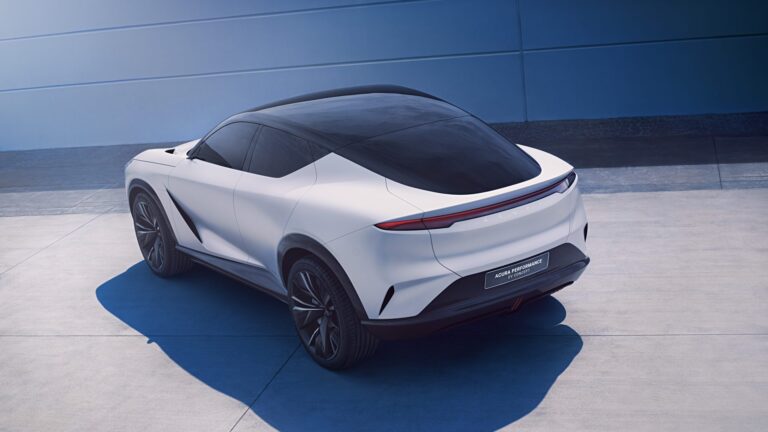Known as the Yuan Up in China, the Atto 2 shares its name with the Atto 3, despite BYD previously stating that all future SUVs would adopt the Sealion name. Every model includes an 8.8-inch digital instrument display alongside an infotainment touchscreen, the size of which depends on the trim level. Active models feature a 10.1-inch screen, while Boost and Comfort variants come with a larger 12.8-inch display that can rotate between portrait and landscape modes to suit user preference.
Design & Styling
Like the Seal sedan and the Atto 3, the Atto 2 is built on BYD’s e-Platform 3.0. It employs MacPherson-strut suspension at the front and a torsion beam at the rear, strategically placed to maximise boot capacity.
Aesthetically, the Atto 2 follows its larger sibling’s design cues. Standard features include LED headlights, slim daytime running lights, and a full-width rear light bar incorporating ‘Chinese knot’ rear lights. It also rides on uniquely designed 17-inch alloy wheels.
Measuring 4310mm in length, 1830mm in width, and 1675mm in height, the Atto 2 is 145mm shorter and slightly narrower than the Atto 3, though marginally taller. Against competitors, it is slightly shorter than the Kona but comparable in size to the Megane.
Its 2620mm wheelbase is longer than many rivals, which should translate to better rear legroom.

Interior & Practicality
In terms of practicality, the Atto 2 delivers well. The boot offers 400 litres of cargo space with the rear seats up, surpassing most of its main rivals, except for the 466-litre Kona. Folding the 60/40 split seats expands capacity to 1340 litres, and an adjustable boot floor is included as standard.
Rear passenger space is generous, comfortably accommodating occupants over six feet tall on longer journeys. However, the high floor results in a seating position that feels too upright, with limited under-thigh support.
The front cabin feels open and airy thanks to the panoramic windscreen, but its minimalist dashboard design, while clean, is largely forgettable. Unlike the quirky Atto 3, the Atto 2’s interior is far more subdued, which is unfortunate, as many competitors boast more distinctive designs.
Material quality is decent, featuring soft-touch plastics and faux leather that mimics the real thing well. The doors also shut with a reassuring solidity, and, notably, the unpleasant chemical smell found in some previous BYD models is absent here.

Engines & Performance
The Atto 2 provides four drive modes—Eco, Normal, Sport, and Snow Fields—each adjusting the throttle and steering characteristics.
With a kerb weight of 1570kg, it remains relatively light for an electric crossover, allowing its 174bhp motor to move it at a respectable pace. It achieves 0-62mph in 7.9 seconds, which is commendable.
Acceleration is mostly smooth and well-measured, making it a great city companion. However, when driving more aggressively, the front wheels struggle for traction, even on dry surfaces.
There is also a slight but noticeable delay between pressing the throttle and the car responding, which can be frustrating in urban driving. For sharper performance, alternatives like the Cupra Born or MG 4 might be better options.
Regenerative braking is available in two levels: normal and high. Normal offers minimal braking force, while high provides a good balance of slowing the car effectively without relying on the friction brakes. The brakes themselves are strong and predictable, though the pedal feel is somewhat vague.



